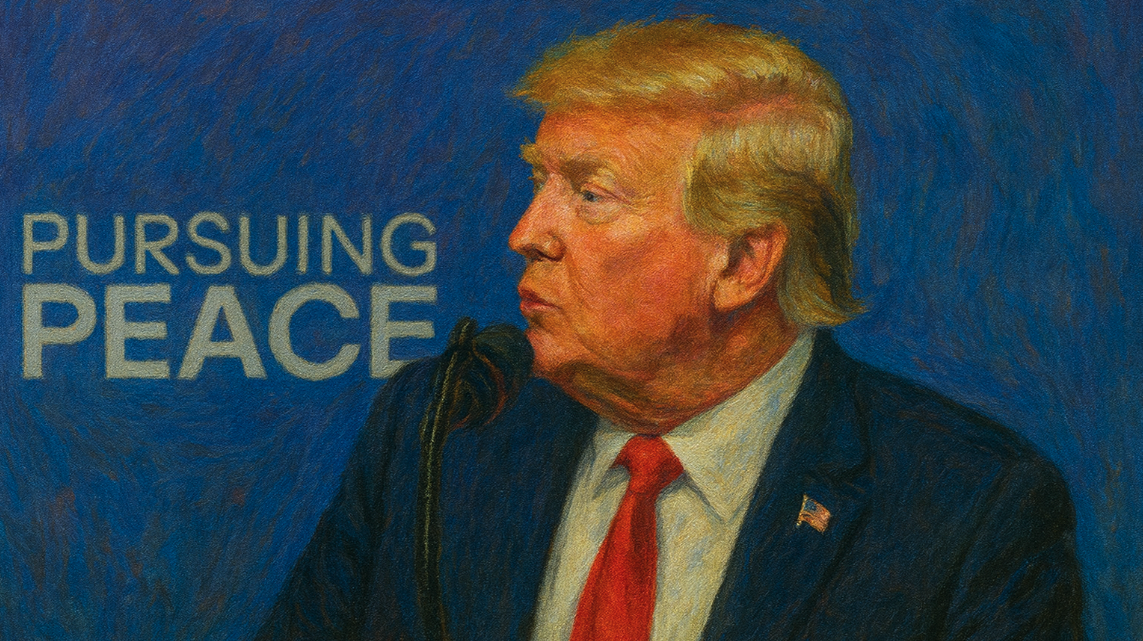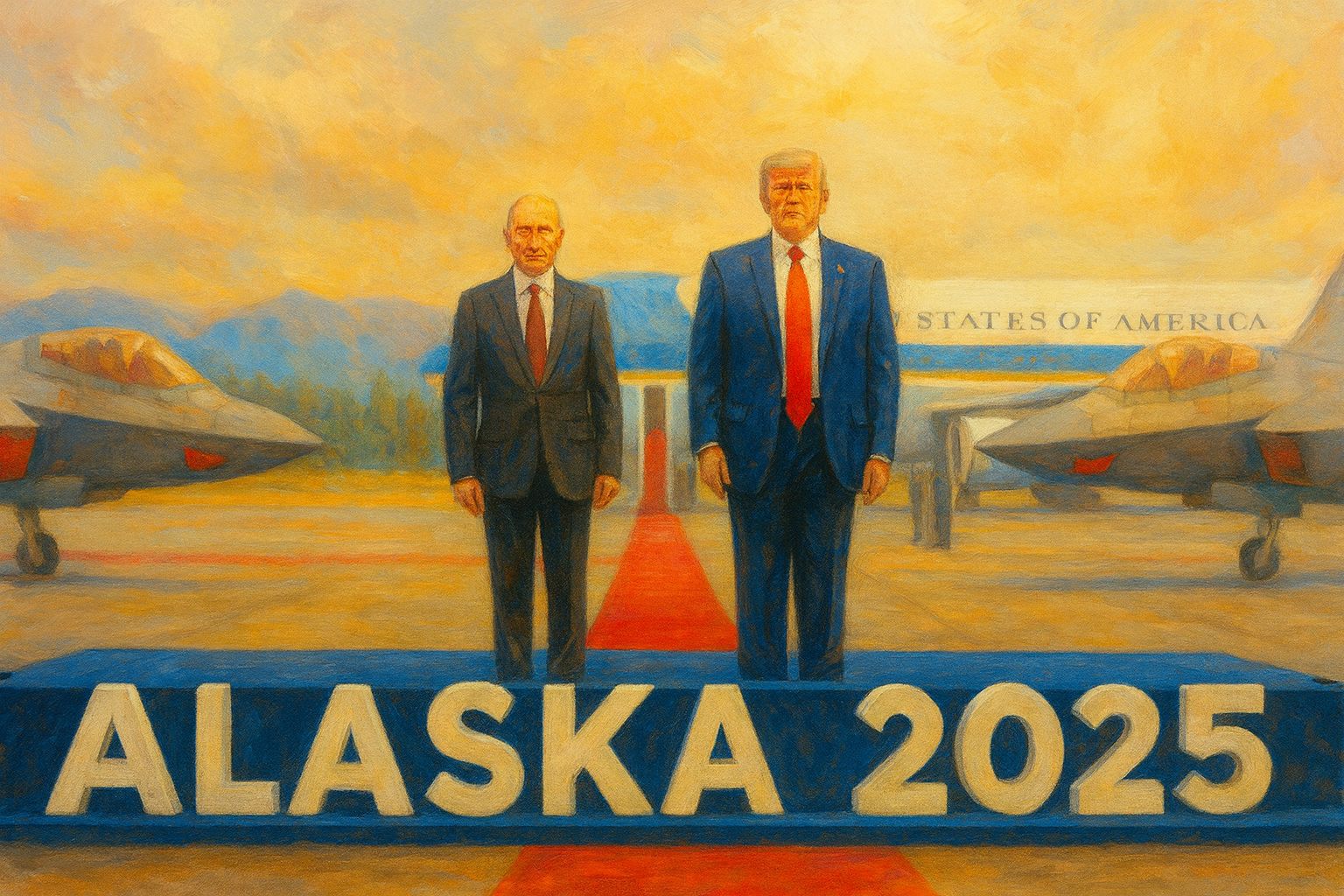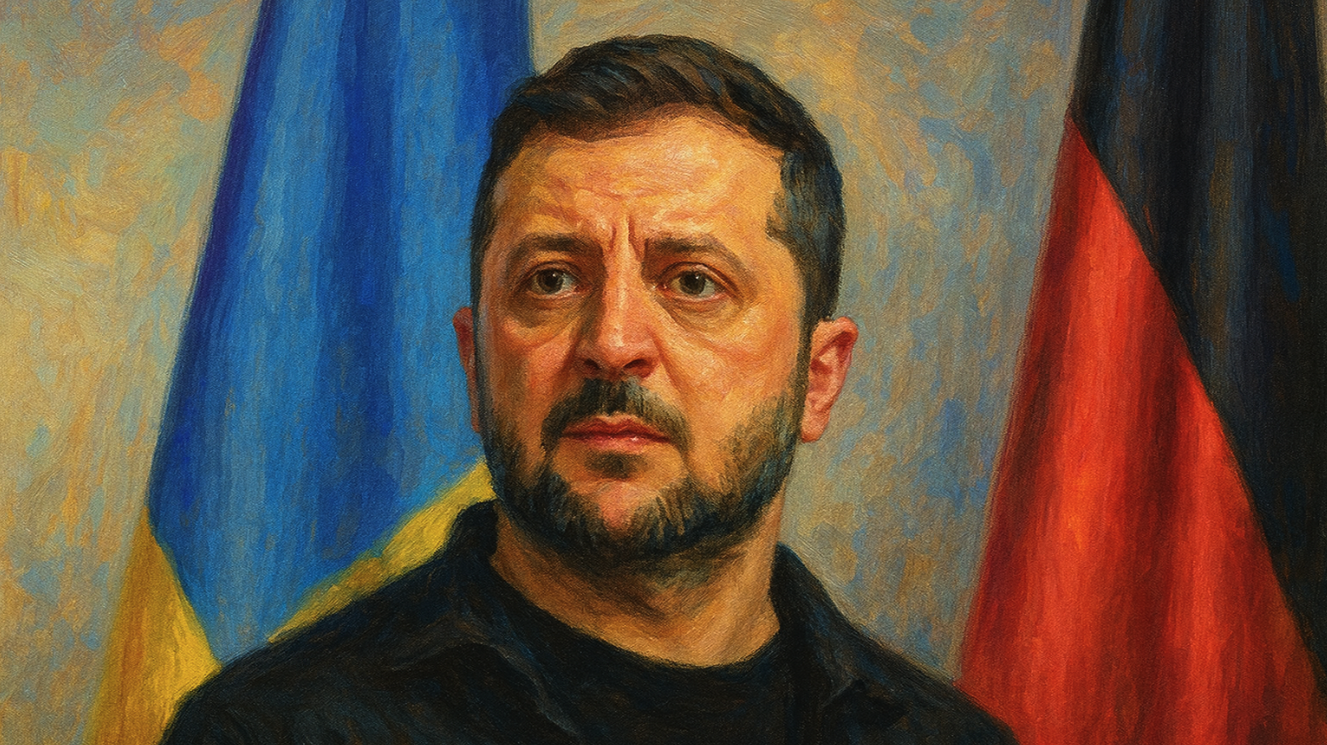Preliminary Insights from the Trump–Putin Meeting in Alaska (August 15, 2025)
The high-profile Alaska summit between Trump and Putin ended with no ceasefire or concessions, giving Putin symbolic diplomatic gains while Trump vowed to “keep talking” as allies stressed that Ukraine’s sovereignty remains non-negotiable.

No ceasefire or peace deal emerged from the Alaska summit, as Putin held firm to demands for Ukrainian concessions while Trump insisted only Ukraine can decide its territorial future.
Diplomatic optics favored Putin, who gained a red-carpet welcome and normalization on U.S. soil without offering concessions, while Trump stressed “keep talking.”
International reactions mixed hope with caution: allies welcomed dialogue but reaffirmed sanctions, security guarantees, and that Ukraine’s sovereignty is non-negotiable.
Focus on the Ukraine War: No Ceasefire or Peace Deal Achieved
U.S. President Donald Trump and Russia’s Vladimir Putin met in Anchorage, Alaska, aiming to end Russia’s war in Ukraine – but the summit concluded with no concrete ceasefire or peace agreement. After a 2.5-hour talk, both leaders spoke positively about an “understanding” on ending the conflict yet offered no details and announced no pause in hostilities. In fact, Russian forces even launched attacks in Ukraine during the meeting, underscoring the ongoing brutality on the ground. Putin held firm to his demands: according to reports, he insisted Ukrainian forces withdraw from the entire Donetsk and Luhansk regions as a condition for ending the war, offering only to “freeze” the frontlines elsewhere if Kyiv ceded those territories to Russia. This maximalist position – essentially demanding Ukraine surrender key land – remained unacceptable to Ukraine and its allies, who have consistently rejected any peace dictated by force. President Trump had initially set high expectations, warning he wouldn’t be happy without a ceasefire and threatening “very severe consequences” for Moscow if Putin refused to cooperate. But faced with Putin’s intransigence, the summit yielded no ceasefire at all, only an agreement to keep talking. In a social media post afterward, Trump acknowledged “there’s no deal until there’s a deal,” emphasizing that the only viable endgame is a direct comprehensive peace agreement rather than a “mere ceasefire” that might not hold. For now, the devastating war – Europe’s largest since 1945 – continues unabated with no immediate end in sight.
Trump’s Stance and Negotiating Approach

President Trump entered the summit determined to personally broker a solution, often boasting he could end the war “quickly.” In practice, his approach was improvisational – he claimed he would “know within the first five minutes” if a deal was possible. Before meeting Putin, Trump signaled some flexibility: for the first time he even floated the “possibility” of security guarantees for Ukraine (albeit outside of NATO), and acknowledged that any territorial compromises “have to be Ukraine’s decision” – “I’m not here to negotiate for Ukraine.” During the talks, Trump notably did not agree to any Russian territorial grabs or announce a dramatic U.S. policy shift, contrary to some pre-summit fears. Analysts noted it “could have been worse” – Trump did not cut a “dirty deal” at Ukraine’s expense (such as endorsing Russia’s land seizures or pressuring Kyiv to surrender). Instead, no deal was made and Trump refrained from forcing Ukraine’s hand, earning cautious praise for sticking to core principles like not carving up Ukraine or undermining NATO commitments. However, the summit’s outcome also saw Trump dial back his earlier threats. Despite warning of swift punishment if Putin stonewalled, Trump ultimately did not impose new penalties during or immediately after the meeting. He emerged describing the talks as “extremely productive,” expressing optimism that peace is attainable with more time. Trump indicated he would swiftly consult NATO allies and President Zelenskyy on next steps, stressing that he’s committed to “keep talking” rather than walking away in anger. This pragmatic, if lenient, response has drawn mixed reviews: supporters commend Trump’s personal diplomatic gambit and desire to “stop the killing,” while critics worry that his free-form negotiating style allowed Putin to pocket a propaganda win without facing consequences. In summary, Trump’s stance was to hold firm on fundamental principles (no forced Ukrainian capitulation) yet remain open to further negotiation, preferring dialogue and hopeful optimism over immediate punitive action.
Putin’s Position: Unchanged Demands and Stalling Tactics

From the outset, President Putin “stuck to his guns,” offering little deviation from the hardline positions he’s held since launching the full-scale invasion. In the Alaska talks, Putin reiterated his narrative that the war’s “root causes” must be addressed – Kremlin code for sweeping demands like rolling back Western security presence in Eastern Europe, “demilitarizing” Ukraine, and blocking Ukraine from NATO. He again questioned Ukraine’s legitimacy as a sovereign nation, indicating his objectives remain maximalist. Indeed, Western observers noted that Russia’s goals are still “eliminationist” – Putin ultimately seeks to dominate or eliminate Ukraine’s independence, not just grab a slice of territory. At the summit, Putin offered no meaningful concessions: he did not agree even to a short humanitarian ceasefire or pullback. Instead, his strategy appeared to be delaying and deflecting – effectively stalling while continuing the war. Analysts characterized Anchorage as a “treading water summit,” where Putin provided just enough cordiality and vague talk of respecting Ukraine’s security to forestall tougher U.S. action. He lavished Trump with flattery and spoke of future U.S.-Russia friendship, but “flinched not an inch” on his demands. This intransigence was evident in Putin’s public remarks afterward: he thanked Trump for a “friendly” meeting but immediately warned Europe not to “torpedo nascent progress,” and repeated that any settlement required addressing Russia’s grievances about NATO. In essence, Putin used the summit to break out of isolation (on his terms) without altering course. His tactic is to stall – continue talks indefinitely while his forces grind on in Ukraine. Western experts caution that Putin will only respond to strength and pressure, and that absent concrete costs, he will “happily tread water” – prolonging a bloody status quo he believes favors Russia’s endurance. The Alaska meeting confirmed that Putin’s fundamental aims haven’t changed, and he remains willing to string along negotiations as a way to avoid defeat while not genuinely compromising on his core goal of subjugating Ukraine.
Economic and Sanctions Aspects
Notably absent from the summit outcome were any breakthroughs on the economic front or sanctions relief. Prior to meeting, Trump had threatened “severe consequences” – widely interpreted as harsher economic sanctions – if Putin refused to make peace. However, when Putin offered no concessions, Trump did not follow through with new sanctions at this stage. The talks concluded with Russia facing no fresh punishment beyond the extensive sanctions already in place. Putin, for his part, tried to emphasize potential business and trade cooperation if relations normalize. He even brought a delegation of Russian oligarchs and executives to Alaska in a bid to entice U.S. investment. Trump acknowledged that Putin had “brought a lot of business people” and spoke of untapped U.S.-Russia economic potential – but he made clear “they’re not doing business until we get the war settled.” In fact, any planned meeting of economic delegations was reportedly scrapped once it became obvious that Putin wouldn’t budge on Ukraine. Observers note that Putin will always prioritize his war aims over economic gains, limiting the value of dangling business deals. The summit thus produced no economic deals or sanctions rollback. “There’s no deal until there’s a deal,” Trump said, suggesting neither peace nor commerce can advance without a full resolution of the conflict. Experts cautioned Western businesses not to read too much into Putin’s talk of investment opportunities – with sanctions still in force and Russia’s economy geared for war, any “business prospects” from the summit are effectively on hold. In sum, Russia gained a symbolic diplomatic opening but not economic relief. Meanwhile, the U.S. and Europe signaled they will continue strengthening sanctions if needed. Western leaders reiterated after the summit that they stand ready to “strengthen sanctions and wider economic measures to put pressure on Russia’s war economy” and will not ease financial pressure until Russia ends its aggression. This means Putin left Alaska with his economy still constrained – and under threat of harsher measures should he use the talks as a mere stalling tactic in lieu of genuine de-escalation.
Summit Optics and Diplomacy

The diplomatic optics of the Alaska summit were striking. Vladimir Putin – who had been treated as a pariah by much of the international community since 2022, even indicted as a war criminal – received a red-carpet welcome on U.S. soil. Trump greeted him with a smile and a firm handshake, and even invited Putin into the U.S. presidential limousine for a ride – an extraordinary courtesy for a leader viewed as an adversary. The two then appeared side by side at a brief press conference, projecting an image of cordiality and cooperation. Putin beamed, thanking Trump for the “friendly” tone and urging that the U.S. and Russia “turn the page and go back to cooperation.” For Putin, merely being on that stage was a diplomatic win: as one analysis put it, he gained the “optics of a red-carpet welcome from the US president on US soil without making a single concession.” This highly symbolic break from his isolation was celebrated in Moscow. However, it alarmed many in the West. Critics argued that such a warm reception risked normalizing Putin despite his ongoing war. Seeing an accused perpetrator of atrocities greeted with pomp was “painful for Ukrainians to watch,” noted one former diplomat. It sent mixed messages about accountability, even if Trump’s goal was to establish personal rapport. On the other hand, Trump’s administration defended the friendly gestures as smart diplomacy – an attempt to build trust and keep Putin engaged in dialogue. No matter how controversial the “literal red carpet” approach was, it is clear Putin relished it: Russian media highlighted the smiling photo-ops, and analysts noted that Putin appeared “charmed and impressed” by Trump, who spoke of having a “fantastic relationship” with the Kremlin leader. In the end, the diplomatic theater in Anchorage yielded tangible benefits mostly for Putin’s image. Yet, it did not signal U.S. acceptance of Russia’s actions – Trump did not concede on core issues, and the cordial atmosphere did not translate into concrete concessions. The optics will nonetheless be remembered: a U.S. president personally hosted Putin despite international opprobrium, betting that an open hand in public could lead to progress behind closed doors.
International Reactions to the Meeting

Ukraine: In the wake of the talks, Ukrainian officials expressed cautious appreciation for the diplomatic effort but also deep concern. President Volodymyr Zelenskyy – who was pointedly not invited to the Alaska summit – voiced support for President Trump’s proposal to eventually hold trilateral talks including Ukraine. “We support [the] proposal for a meeting between Ukraine, the USA, and Russia,” Zelenskyy posted, adding that Ukraine must be at the table for any key decisions. Zelenskyy announced he will meet Trump in Washington on Monday to discuss “all the details” of ending the war. Crucially, Zelenskyy and his European allies stressed that Ukraine’s territorial integrity is non-negotiable – “It will be up to Ukraine to make decisions on its territory. International borders must not be changed by force,” a joint post-summit statement declared. The Ukrainian leader also urged continued pressure on Moscow: after speaking with Trump, Zelenskyy said that if Russia stalls or refuses an “honest end to the war,” then sanctions on Moscow should be tightened further. He welcomed Trump’s openness to security guarantees, but warned against any “pause” that simply lets Russia regroup, insisting on a “real, long-lasting peace” not just “another pause between Russian offensives.” In Kyiv, there is relief that Trump did not make unilateral concessions, but anxiety remains that Ukraine could come under pressure to accept a deal on Putin’s terms in the future. For now, Ukraine reiterated it is “ready for constructive cooperation” toward peace – so long as its sovereignty is fully respected.
Europe: Reactions from European leaders were broadly supportive of diplomacy tempered with vigilance. A joint statement from key European allies on Saturday welcomed President Trump’s efforts to halt the war and “achieve a just and lasting peace,” while underscoring several firm principles. They agreed Ukraine must receive “ironclad security guarantees” as part of any settlement, and explicitly stated that no limitations should be placed on Ukraine’s ability to defend itself or partner with third countries. “Russia cannot have a veto on Ukraine’s pathway to EU and NATO,” the statement declared, rejecting Putin’s demands outright. European leaders also insisted they will “continue to strengthen sanctions” and other measures to pressure Russia’s war machine, and that Western military and economic support for Ukraine will carry on “as long as it takes.” Individual capitals echoed this stance. Britain’s Prime Minister Keir Starmer praised Trump’s initiative, saying “his leadership…should be commended” for bringing peace closer, and hailed U.S. willingness (alongside Europe) to provide robust security guarantees to Ukraine. At the same time, Starmer emphasized that until Putin “stops his barbaric assault,” the West will keep “tightening the screws” with more sanctions and arms for Kyiv. France’s President Emmanuel Macron struck a cautionary note, reminding everyone of Russia’s “well-established propensity” to break its commitments. Macron vowed to work closely with Trump and Zelenskyy but stressed Western unity and responsibility in any peace process. Germany’s Chancellor reaffirmed that Europe’s solidarity with Ukraine remains “unwavering” and that peace must safeguard Ukraine’s and Europe’s vital security interests. Italy’s Prime Minister Giorgia Meloni spoke of a “glimmer of hope” for peace and affirmed Italy is doing its part with allies. Across Eastern Europe – the nations most wary of Russian aggression – relief was mingled with resolve. Poland’s leadership, for example, welcomed the fact that no appeasement deal was made and urged continued Western unity. Polish Prime Minister Donald Tusk warned this is a “decisive moment” for Ukraine and European security, noting that Putin “respects only the strong.” He called maintaining total Western unity “so important” going forward. The Prime Minister of the Czech Republic bluntly observed that the summit’s outcome shows Putin is “still only interested in the greatest possible territorial gains and the restoration of the Soviet empire,” reinforcing why the West must stand firm. Even the more skeptical voices in Europe put a positive spin on Trump’s diplomacy: Hungary’s Prime Minister Viktor Orbán – often friendly to Moscow – praised the renewal of U.S.-Russia dialogue, claiming “today the world is a safer place than it was yesterday” now that the two nuclear powers are talking again. Meanwhile, neutral or global South countries welcomed the talks. India, for instance, commended Trump and Putin’s “leadership in pursuit of peace” and said the world wants an “early end to the conflict” through dialogue. Norway and others, however, cautioned that only continued pressure on Moscow would yield results, and warned against any splitting of the transatlantic alliance. Overall, the international reaction mixed hope with caution: hope that the Alaska summit might be the start of a peace process, but strong insistence that any outcome must be on Ukraine’s terms and that Russia must not be rewarded for aggression.
Russia: In Moscow, the summit was hailed as a win for Putin. Russian officials and state media were jubilant that their president was received by the American leader “without making concessions” and that Trump did not follow through on his threats of new sanctions. “The meeting proved that negotiations are possible without preconditions,” exulted former Russian president Dmitry Medvedev, noting that the talks can continue even as Russia wages war in Ukraine. This was exactly Putin’s aim – to show that Russia cannot be isolated or forced to capitulate. A member of Russia’s foreign policy establishment, speaking anonymously, crowed that “Putin gave Trump nothing, but still got everything he wanted. Trump finally listened to his demands.” Indeed, from the Kremlin’s perspective, Putin achieved the prestige of a U.S. summit and a narrative that the onus for peace now falls on Ukraine and the West. Russian commentators seized on Trump’s remark that “it’s really up to President Zelenskyy to get it done now,” portraying it as a sign the U.S. might pressure Kyiv to accept Russian terms. Putin’s camp also emphasized Trump’s friendly demeanor and noted that no war-crime criticisms or moral lectures were aired publicly at the summit. Still, some in Moscow acknowledge that no immediate relief came out of Alaska – Putin did not obtain a lifting of sanctions or Western recognition of Russia’s annexations. But those close to the Kremlin are confident that time is on Putin’s side. As one Russian lawmaker put it, Russia’s war objectives “will be accomplished either by military or diplomatic means” – implying that if talks fail to give Russia what it wants, the offensive will continue. For now, though, the Kremlin is celebrating what it views as a strategic and propaganda victory: Putin was brought in from the cold and did so on his terms, with Russia’s position unchanged.
Next Steps and Ongoing Negotiations
Despite the lack of a breakthrough in Alaska, the dialogue is set to continue. Both leaders hinted at the possibility of future meetings – perhaps even in Moscow – though no date was confirmed. Trump characterized the summit as a good start, saying “we didn’t get there” on peace this time but expressing optimism that continued talks could reach that goal. He immediately scheduled follow-up discussions: Trump will meet with President Zelenskyy in Washington and also brief America’s NATO partners, stressing the need for a coordinated approach that brings Ukraine into the negotiations without undercutting its interests. Zelenskyy’s upcoming White House visit signals that Ukraine will be directly consulted before any further steps – aligning with the Western mantra “nothing about Ukraine without Ukraine.”
Looking ahead, a key question is what kind of peace proposal might eventually emerge. Trump’s post-summit comment that “the best way to end the horrific war…is to go directly to a Peace Agreement…not a mere ceasefire” suggests he is now aligned with Putin’s insistence on a comprehensive deal. That could imply discussions over political issues like Ukraine’s neutral status, future NATO/EU aspirations, and perhaps local elections or autonomy arrangements in occupied regions. However, Putin’s definition of a “peace agreement” appears to require Ukrainian capitulation on core issues of sovereignty – something Kyiv has staunchly refused. There is concern that if Trump is too eager for a deal, Ukraine might face pressure to accept painful concessions (such as ceding territory or limiting its military) to satisfy Putin’s terms. Thus far, Trump has not endorsed any territorial giveaways,



